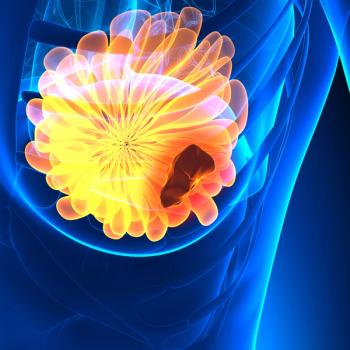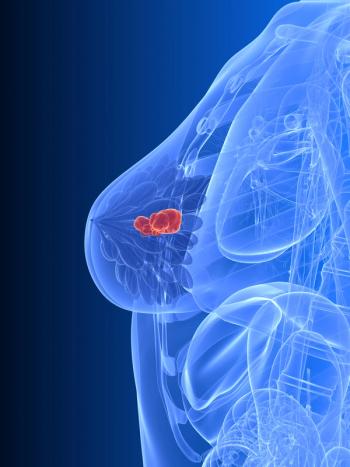
Miami Breast Cancer Conference® Abstracts Supplement
- 42nd Annual Miami Breast Cancer Conference® - Abstracts
- Volume 39
- Issue 4
- Pages: 35
TPS 83 ELAINE 3: Open-Label, Randomized, Multicenter, Phase 3 Study of the Efficacy and Safety of Lasofoxifene Plus Abemaciclib for Treating Locally Advanced or Metastatic, ER+/HER2–, Breast Cancer With an ESR1 Mutation
Background
Mutations of the ESR1 gene are thought to drive resistance to endocrine therapy (ET) in patients with estrogen receptor–positive/HER2-negative (ER+/HER2–) metastatic breast cancer, especially after a CDK4/6i inhibitor (CDK4/6i). Lasofoxifene is an oral, next-generation ET and ER antagonist at the breast. Two phase 2 studies examined the effects of lasofoxifene in women with ER+/HER2–, ESR1-mutated metastatic breast cancer that progressed on previous ET and CDK4/6i. The phase 2 ELAINE 1 trial (NCT03781063) showed numerically greater progression-free survival (PFS; median, 5.6 months vs 3.7 months; HR, 0.669; 95% CI, 0.445-1.125; P = .138), objective response rate (ORR, 13% vs 3%; P = .124), and clinical benefit rate (CBR, 37% vs 22%; P = .117) vs the ER degrader fulvestrant, with a favorable safety profile.
In the phase 2 ELAINE 2 trial (NCT04432454), lasofoxifene plus abemaciclib was well tolerated with a median PFS of about 13 months, ORR of 56%, and CBR of 66%. The efficacy of abemaciclib/fulvestrant in postMONARCH was also shown to be superior vs fulvestrant/placebo (median PFS, 6.0 months vs 5.3 months; HR, 0.73; 95% CI, 0.57-0.95; nominal P = .02) in non-biomarker–selected patients with metastatic breast cancer who progressed on CDK4/6 inhibitors and aromatase inhibitors (AIs) with a similar HR in patients with ESR1 mutations. The promising results of the ELAINE 1 and 2 trials supported initiation of the registrational phase 3 ELAINE 3 trial (NCT05696626).
Materials and Methods
ELAINE 3 is an open-label, phase 3, multicenter study that evaluated the efficacy, safety, and tolerability of lasofoxifene plus abemaciclib vs fulvestrant plus abemaciclib. Women (pre- and postmenopausal) and men were aged 18 years or older; and had ER+/HER2–, locally advanced breast cancer and/or metastatic breast cancer; 1 or more acquired ESR1 mutation; progression on an aromatase inhibitor plus palbociclib or ribociclib as their first hormonal therapy for advanced breast cancer/metastatic breast cancer; and 1 or fewer chemotherapy line in the advanced/metastatic setting. Patients will be randomized 1:1 to lasofoxifene at 5 mg/day plus abemaciclib at 150 mg BID, or fulvestrant 500 mg IM (on days 1, 15, and 29, then monthly), plus abemaciclib 150 mg twice daily, until progression, death, unacceptable toxicity, or study withdrawal. End points include PFS (primary), ORR, overall survival, CBR, duration of response, time to response, time to cytotoxic chemotherapy, quality of life (including FACT B-ES sexual and vaginal health domain), and safety. Blood samples for circulating tumor DNA (ctDNA) will be collected for genomic analyses at screening; at weeks 4 and 8, and every 8 weeks thereafter; and at the final visit. Outcomes with lasofoxifene /abemaciclib vs fulvestrant/abemaciclib will be compared using a stratified Cox proportional hazards model and stratified log rank test. Target sample size is up to 500 to provide 90% power with a 1-sided type I error rate of 0.025 after 285 PFS events.
Status
Recruitment has been initiated and is expected to occur over 18 months.
Articles in this issue
Newsletter
Stay up to date on recent advances in the multidisciplinary approach to cancer.





















































































